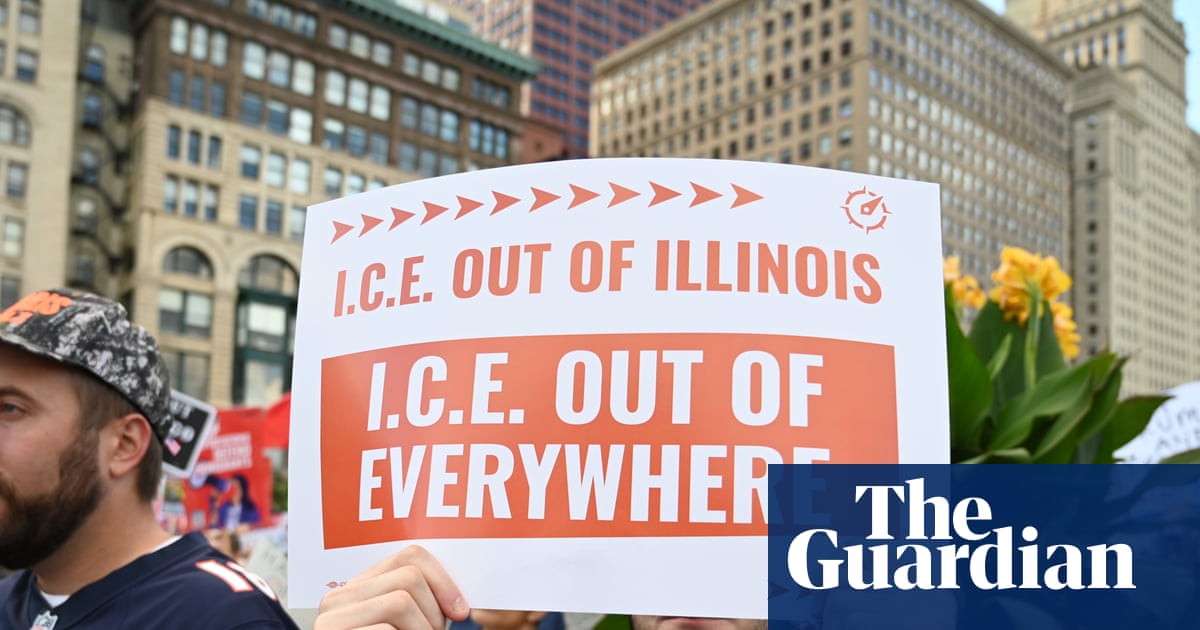Seventh-generation farmer Brian Harbage grows corn, soybeans and grass, and runs a cattle operation across five counties in western Ohio. In the world of agriculture, his work makes up a large business.
And still, the past two years have been immensely challenging amid the twin threats of the climate crisis and the Trump administration.
Last year, regions of the eastern corn belt saw just 20% of crops harvested due to a drought that brought little precipitation between June and October. It was part of a climatic cycle that involved drought, heat and wildfires that cost crop producers $11bn nationally.
“Last year, we got a good crop started, and then it just quit raining. Our yields were definitely reduced by at least 25-30%,” says Harbage.
This year, it’s been almost the complete opposite.
Excess rainfall has fueled severe disease and pest pressure on the several thousand acres of soybeans and corn he planted in the spring.
“There were three-day windows, it seemed like. It would just start to get dried out and it would rain,” he says.
“We finished up [planting] at the beginning of June. We like to be finished by 15 May. Anything that’s planted later means that it was probably planted in marginal conditions since we were rushing to get it in, and secondly, it doesn’t have near enough time to mature before harvest.”
With the 2025 harvest of corn and soybeans approaching – America’s biggest two crops and the linchpins of agriculture – crop growers are facing down the gauntlet. Climatic swings, rocketing operating costs and low international demand, caused, in large part, by government policy in the shape of tariffs, has created the perfect storm.
“Farming is not for the worrisome,” says Harbage. “We always kid that we are crisis managers.”
Suicide rates among farmers are 3.5 times the national level.
In 2023-24, China bought 24.9m metric tons of soybeans worth $13.2bn, largely used to feed its 427-million-strong pig herd. At under 6m metric tons, US farmers’ second biggest international soybean market, Mexico, lags far behind.
Since 2017, when tariffs were first introduced by President Trump, crop farmers have been struggling with the decline of China as the leading market for soybeans and an important market for corn exports.
Last month, reports emerged that exports of soybeans – America’s largest grain export by value – had hit a 20-year low.
“Tariffs are probably something that will help in the long run, for the whole country; in the short run it’s terrible for farmers,” says Harbage.
“We’re really taking it on the chin now because if we can’t export, our prices are low. And if we can’t export and we have a terrible crop then it’s a one-two punch. I see what the government wants to do, but it’s hurting me in the near term.”
Farmers and rural Americans are keen to highlight that their political and voting preferences are rarely fueled by a single issue or event such as tariffs. Many continue to back Trump, despite the obvious financial challenges the president’s policies are fomenting.
Trump has been largely silent on addressing the pain his tariffs have caused farmers and ranchers, despite rural voters being a cornerstone of his political base. On 10 August, he posted to Truth Social a demand that China quadruple its purchases of American soybeans. The president claimed that China was “worried” about having a soybean shortage, although China has vowed to increase its domestic soybean production yield by 38% by 2034.
What’s more, some market analysts say that Trump’s post didn’t make the rounds on Chinese social media, suggesting his demand may not have been heard by the country’s political leaders.
With the soybean harvest in the midwest set to start about a month from now, and corn following weeks later, the fear that China may not buy a single shipload of grain this season is growing for many.
“With [tariffs] in place, we are not competitive with soybeans from Brazil. Our marketing year starts 1 October and usually by now we’d see China making commitments to pre-purchases for soybeans. China has not made a single purchase for US soybeans,” says Virginia Houston, director of government affairs at the American Soybean Association, a lobbying organization.
“No market can match China’s demand for soybeans. Right now, there is a 20% retaliatory duty from China.”
To appease his farming base, the Trump administration announced $60bn in subsidies for farmers over the next decade in the recent tax bill, but that has drawn criticism from those who say that farmers shouldn’t be subsidized on taxpayers’ dime.
Others have reported that funding is going to select producers in specific regions of the US, benefiting bigger producers rather than family farms. Adding to the export challenges, the price of commodity crops in the US has been in steady decline for the past three years due to a smaller cattle herd and falling ethanol production.
Houston says that when she speaks with the White House and Congress to share the struggles farmers are facing due to tariffs, the response is that “they support farmers [but] we are one cog in the wheel of this complex relationship.
“The farm economy is in a much tougher place than where we were in 2018 [during Trump’s previous China trade war]. Prices have gone down while inputs – seed, fertilizer, chemicals, land and equipment – continue to go up.”
All the while, unpredictable weather conditions continue to make planning more difficult.
For much of this summer, afternoon storms had been a near-daily occurrence in Indiana, Ohio and elsewhere in the eastern corn belt, causing ponding that kills early plant growth. Diseases such as northern corn leaf blight, gray leaf spot and tar spot soon followed.
“When it’s being attacked by disease, it’s not growing to its full potential because it’s trying to fight off the disease,” says Harbage.
Although he treated his crops for disease, the heat and humidity that have been an uncommon feature of life this summer can overcome the effects of fungicides.
On top of that, Harbage says he’ll have to spend additional money on propane to dry his corn before sending it to consumers, again due to the high moisture content.
If Trump walked into his farm today, Harbage says he’d have one message.
“The exports is number one. That’s the number one fix. We have to get rid of what we’re growing, or we have to be able to use it,” he says.
“China, Mexico and Canada – we export $83bn worth of commodities to them a year. So if they’re not buying, we’re stuck with our crop.”
-
In the US, you can call or text the National Suicide Prevention Lifeline at 988, chat on 988lifeline.org, or text HOME to 741741 to connect with a crisis counselor. In the UK and Ireland, Samaritans can be contacted on freephone 116 123, or email [email protected] or [email protected]. In Australia, the crisis support service Lifeline is 13 11 14. Other international helplines can be found at befrienders.org

 German (DE)
German (DE)  English (US)
English (US)  Spanish (ES)
Spanish (ES)  French (FR)
French (FR)  Hindi (IN)
Hindi (IN)  Italian (IT)
Italian (IT)  Russian (RU)
Russian (RU)  3 weeks ago
3 weeks ago
























Comments